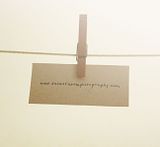
So far, I've used these five methods.
(1) TRANSPARENCY. print image onto a sheet of ink-jet transparency film, (spray with fixative) select a background and paint surface with a layer of soft gel. Place transparency ink-side down and brayer. peel back a corner to check your progress.. when image has (mostly) transferred - remove!
(2) GEL SKIN. First, select your image and cut it out. Apply soft gel like you're spreading butter on toast. let dry. repeat 5-10 times. roughen back with sandpaper, moisten with water & rub off paper backing with fingers.
(3) MY STANDARD. select a printed image and a background, apply a generous layer of soft gel to both and brayer for full saturation and coverage. Wait 1-2 minutes! Then peel back a corner to check your progress.. when image has (mostly) transferred - remove! Toner images work best but with trial-and-effort, meaning different sources for images, different substrates & varied drying time, (even FABRIC), you'll find there are MANY options. I have had most success with this method using vintage ledger paper.
(4) STANDARD. same as above but instead of peeling the image away from the background page, use sandpaper to roughen, moisten with water and rub backing off with fingers.
(5) PACKING TAPE. Select and cut out an image from a magazine or brochure. Apply as many strips of packing tape needed to cover completely. Submerge in warm water and remove once you're able to rub paper off with your fingers, sanding to roughen as that helps to get it started (but be careful, as always, not to remove too much). SOME MAGAZINES work better than others, so keep searching & testing... I can promise you that, as in life, the reward is worth the effort!
The trick with ALL of these methods is that the darker colors become more opaque while the lighter areas allow your background to show through. Be aware that text will appear reversed except when using gel skin and packing tape, where the "positive" image is used.
Here a few photos to illustrate the gel skin process:







In pic#5, you see a crisp, transparent image however, the final step in my journal shows a "milky" uneven finish to my transfer. An "ooops!" - here's what happened: instead of JUST spraying the back and rubbing the paper off.. I first dipped the image (with 8 layers of dry Royal Coat satin) into a tub of water for a few minutes - and that was my mistake. The front turned completely opaque and I was forced to use the reverse side which still retained a fine film of paper, no mater how hard I tried to remove it, even glaze it. LESSON: reserve the dipping step for packing tape transfers! Don't be afraid to make mistakes because trial-and-error is part of streching yourself creatively!
No art is bad art!

Mother's Day card 2009 made with gel skin method, described above. I cut-away the card behind the image, to show its transparent qualities, which is shown from the reverse at the beginning of this post.





























2 comments:
Hi Vicki,
Thanks for visiting my Angel Tutorial on my blog. Thank you for sharing these tips on image transfer. I think I will try this, when I get the time.
Thanks again,
Kyles =D
Thanks, for takig the time to write this. Gel transfers are the 'nightmare' of many artists. i also discovered that using the correct medium gel helped. You mentioned packing tape. What kind?
Post a Comment